IMPLATS TRAGEDY
Failure of emergency protocol led to death of 11 Implats miners after ‘rapid descent’ of conveyance cage
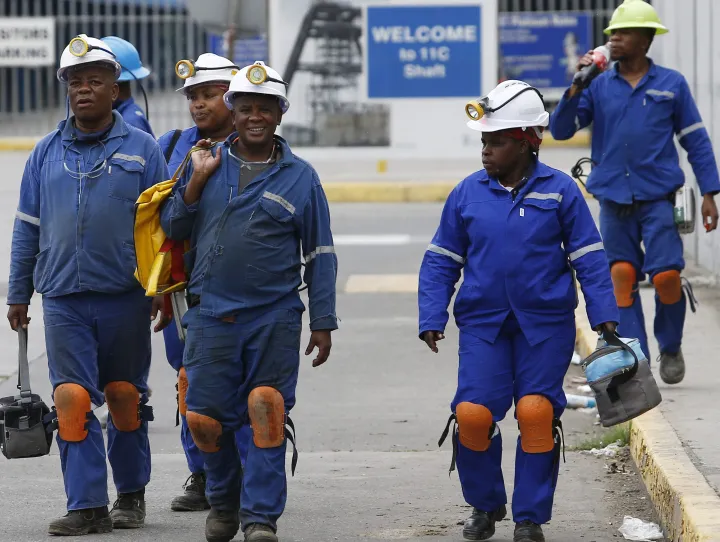
The conveyance cage that takes workers down a mine shaft and back to the surface is generally one of the safest places to be underground. That’s one reason the Impala Platinum disaster at its Rustenburg operations, the worst in South Africa in more than two decades, is so shocking.
When being hoisted to the surface at the end of a long shift underground, a miner generally breathes a sigh of relief. The dangers that lurk in the depths recede as the “cage” — which is what it effectively is — ascends to the surface.
On Monday afternoon, 86 Implats mine workers would have been looking forward to returning to the surface and taking a shower. They were spread out among the three levels of the cage, which has a capacity for up to 145 workers. The miners in the bottom level of the cage were unaware that they were in the worst place possible.
Shortly before 5pm on Monday, Implats says, the conveyance lift in 11 Shaft — which is about 1,000m deep, with operations across 20 levels — began its scheduled ascent to 17 Level.
“The conveyance unexpectedly reversed direction and began descending back down through the shaft. The emergency protocol for such an incident was immediately and automatically activated. Regrettably, although the winder rope remained intact, the emergency protocol failed to immediately arrest the lift’s rapid descent,” the company said.
The winder counterweight became snagged for some reason, which resulted in what Implats described in a statement as an “almost instantaneous deceleration”.
It went on to say that the force of this “impacted the 86 employees who were standing upright in the three levels of the lift at the time. Given that the lift was still attached to the winder rope as it slipped, the lift was not in free fall.”
So it was not a “free fall”, but a “rapid descent” of around 160m — which would have been hair-raising enough. Then there was the jarring stop, and the bottom of the cage also hit steel beams near the bottom of the shaft, Implats spokesperson Johan Theron told Daily Maverick. The result was that the miners in the lowest level of the cage experienced the worst casualties.
“The mechanisms used to operate the conveyance system and the safety protocols involved in arresting falls in such systems are known to be safe and are used in mining operations globally. The failure of the arrest safety protocol is therefore unusual, highlighting the tragic nature of this accident,” Implats said.
Read more in Daily Maverick: Implats says 11 miners killed, 75 in hospital after conveyance cage tragedy in Rustenburg
Tshegofatso Mphuti, a 23-year-old miner, was one of the survivors of the accident, in which 11 of his colleagues lost their lives and 74 others were injured. Mphuti, who had been working at the mine for a year, was recovering at Impala Medical Services Hospital, and his uncle Lesley Mphuti shared his account.
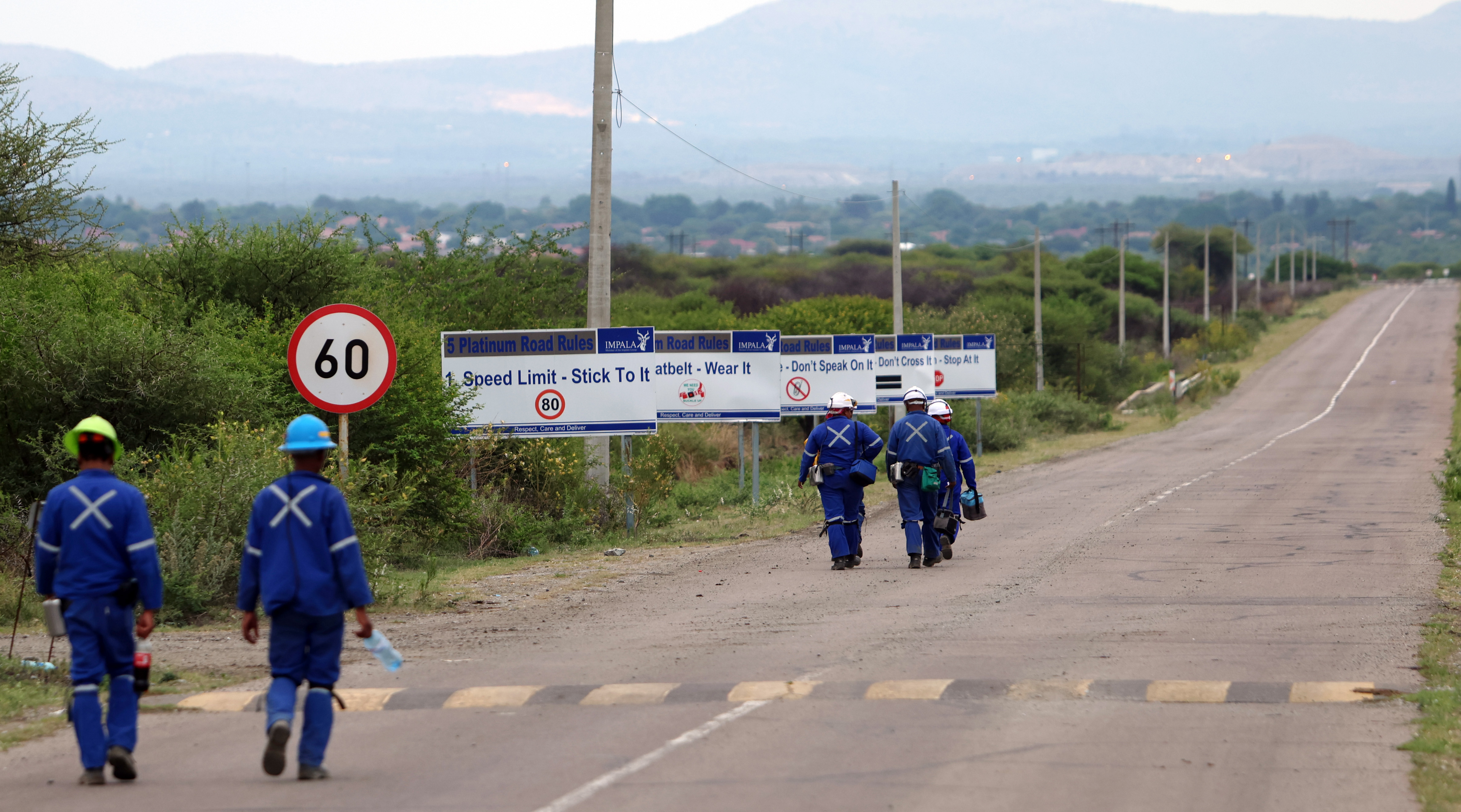
Miners walking back to 11 Shaft at Impala Platinum mine in Rustenburg. At least 11 miners lost their lives and 75 were injured in an accident on 27 November 2023. (Photo: Felix Dlangamandla)
“Tshegofatso tells us that while they were in the elevator, it tripped twice. It initially seemed to be ascending, as if preparing to open and let them out, but swiftly descended, leading to the demise of 11 colleagues and leaving him and 74 others injured.
“At the time, they couldn’t ascertain if the elevator was moving up or down. It had jammed and we suspect a line connected to the elevator broke,” Lesley Mphuti said.
Tshegofatso suffered injuries to his back, legs and head.
His uncle expressed deep frustration at the lack of communication from the mining company. “What hurt me the most is the company did not even call us as families to let us know. I found out about this on a Facebook post and immediately started to look for my nephew because I was worried.
“He is usually home at around 3pm and the latest by 4pm. It was four hours later that my search began. I went to three hospitals before I could locate him in Impala Medical Services.”
Despite the pain and trauma, Lesley Mphuti expressed gratitude that his nephew survived the tragedy, acknowledging the painful reality that others were not as fortunate.
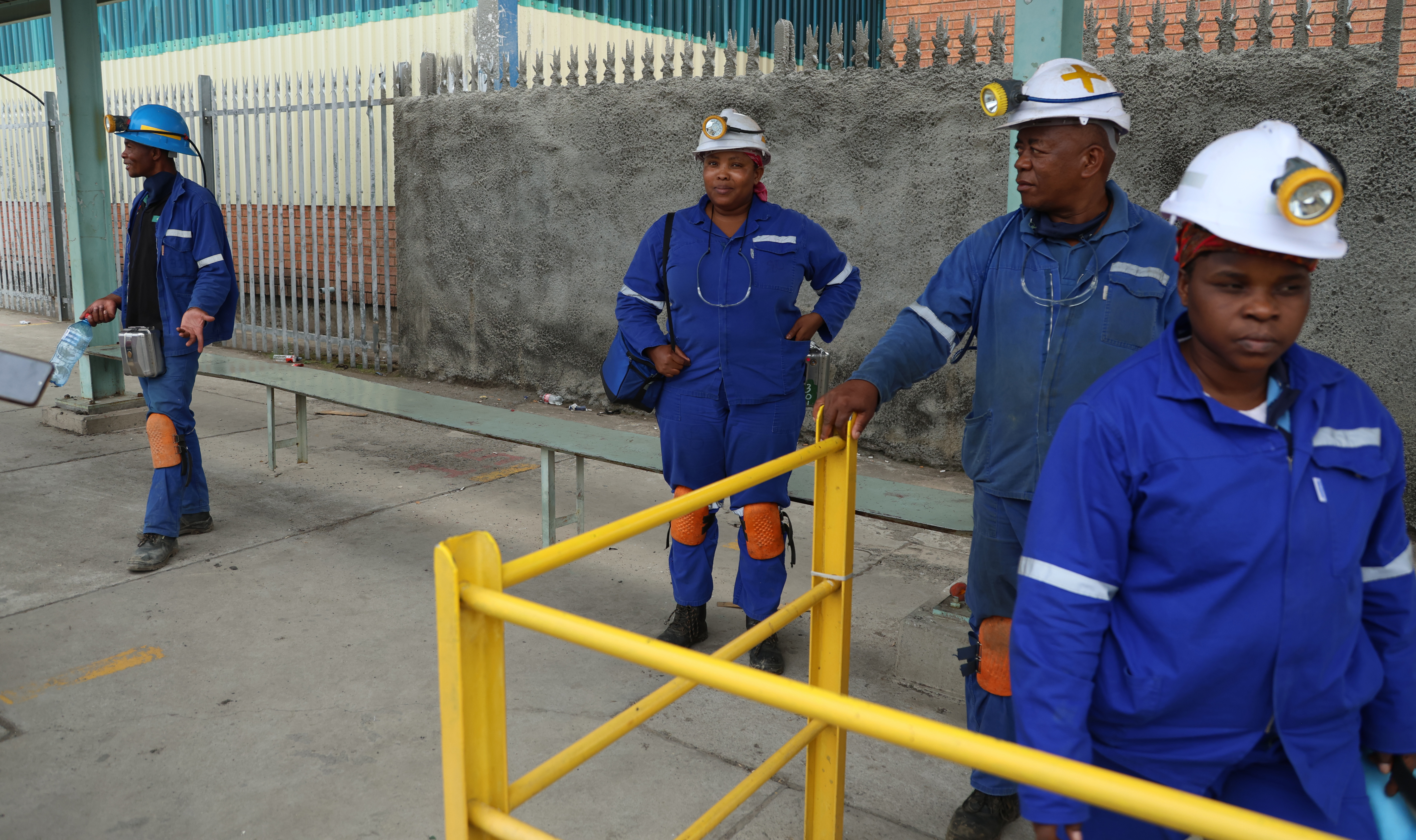
A group of miners emerged from 11 Shaft at Impala Platinum mine in Rustenburg. (Photo: Felix Dlangamandla)
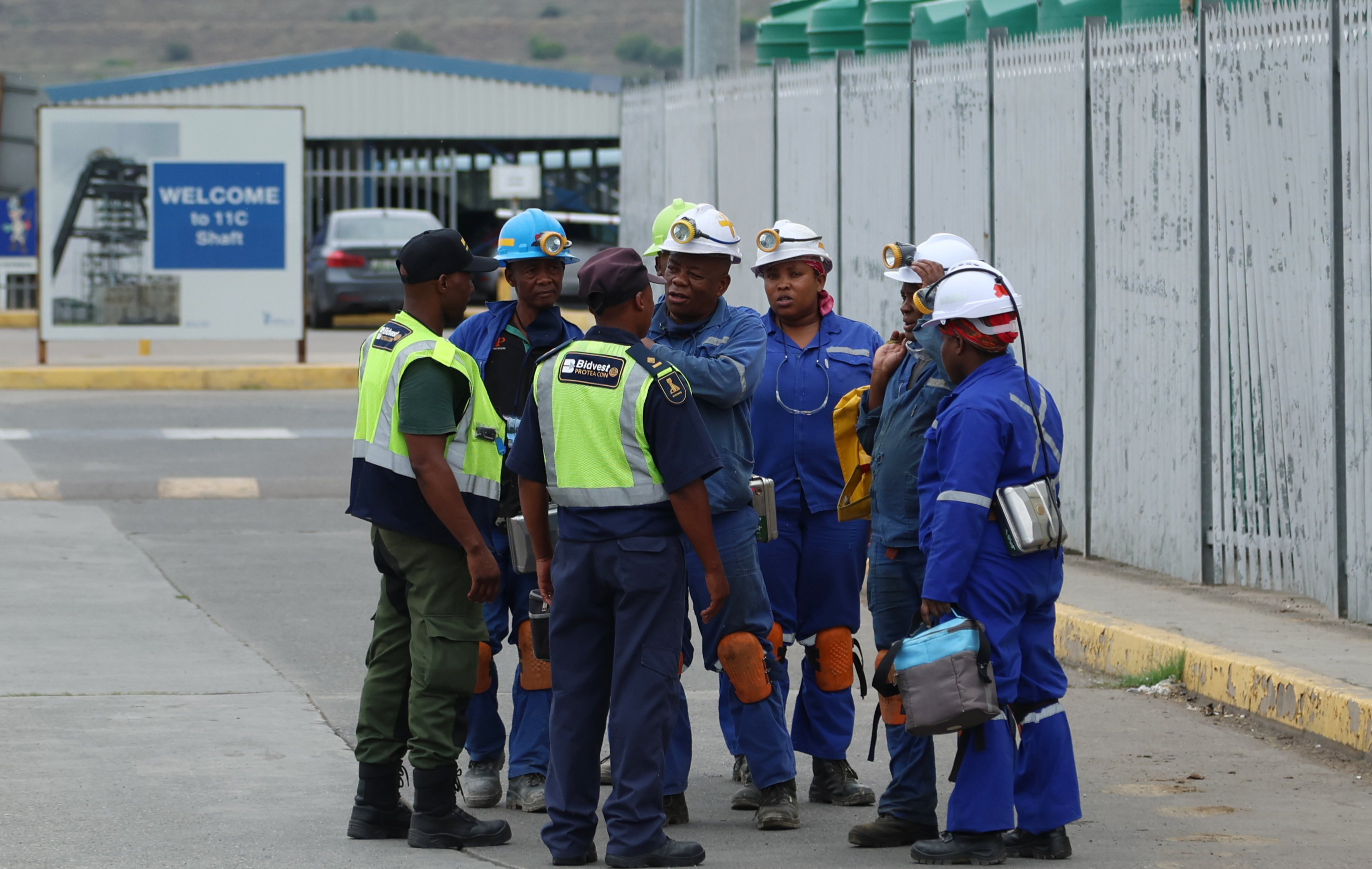
A group of miners talking to security personnel after emerging from 11 Shaft at Impala Platinum mine in Rustenburg. (Photo: Felix Dlangamandla)
Investigations under way
Investigations are under way and production has been halted at Rustenburg while checks are made on the winder equipment at other shafts.
Minister of Mineral Resources and Energy Gwede Mantashe visited the mine on Tuesday and was given a briefing about the accident, the worst to hit South Africa’s mining sector since 2001 when 12 miners were killed in an explosion at the Beatrix gold mine in the Free State.
“We have 11 people who have lost their lives. We are mourning the passing of these mineworkers and sympathise with the families. This is a disaster which will require a thorough investigation in line with the Mine Health and Safety Act. It has dented our efforts to move to zero harm,” Mantashe was quoted as saying in a statement.
“Zero harm” refers to the noble industry, labour and government goal of making mining so safe in South Africa that no one dies on the job.
It would be an understatement to describe it as an elusive target, but massive strides have been made on the health and safety front in South Africa’s deep and dangerous mines.
In 2022, fatalities in South Africa’s mining industry hit a record low for a single year since the start of industrial-scale operations in the late 19th century. At 49, it still meant that a miner was killed on average almost every week last year.
This figure was less than a fifth of the 2003 death toll of 270. In the 1980s as many as 800 miners were killed in a single year. But the Implats disaster means that at least 52 miners have been killed on the job in 2023, so this year will not be a record year for safety.
It is of more than passing interest to note that much of the safety drive has been focused on preventing “falls-of-ground” (FOG) accidents — which means that a rock above literally falls on you with crushing impact. These have long been the leading cause of death, accounting for almost 40% of mine fatalities in South Africa from 2000 to 2021.
The roll-out of safety netting and bolting in the roof of underground mines has been one of the key factors behind a sharp decline in FOG fatalities. Mechanisation, where South Africa’s arduous geology allows it, has also paid huge safety dividends, as it replaces humans with machines in hazardous areas.
But when you are in the cage, you don’t expect a rock to fall on your head. There have been accidents involving them, but they are comparatively rare.
On 1 May 2008 — Workers’ Day, no less — nine employees at Gold Fields’ South Deep mine west of Johannesburg were killed when the conveyance cage they were travelling in dislodged and plummeted more than 60m.
That incident triggered a safety drive under Gold Fields’ former CEO Nick Holland, who had just assumed that role at the time. South Deep is now a totally mechanised and heavily automated mine with a sterling safety record. But humans still descend 3km down — and 3km up — the shaft there and do so safely.
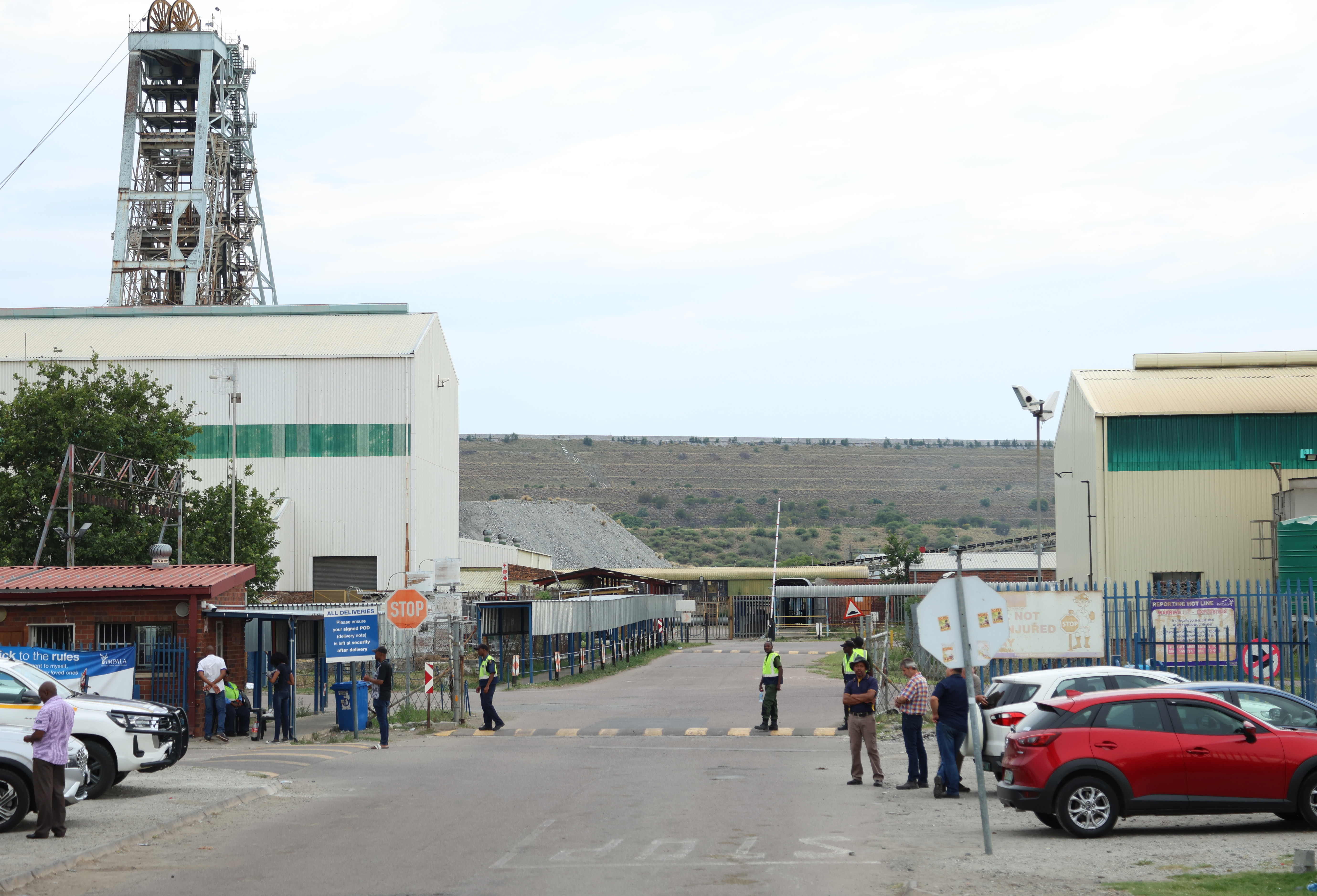
Security personnel at the entrance of 11 Shaft at Impala Platinum mine. (Photo: Felix Dlangamandla)
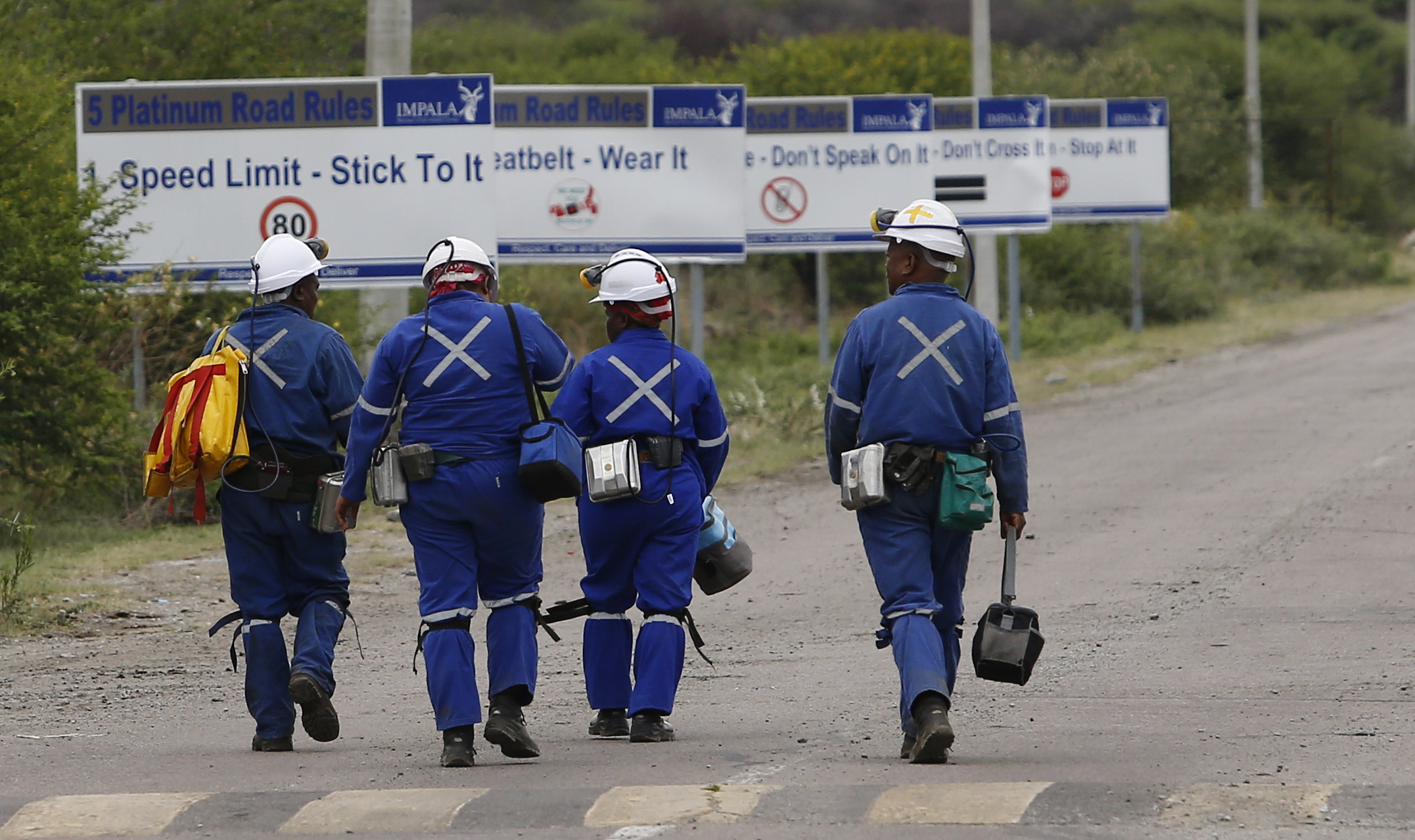
Miners outside the Impala Platinum mine in Rustenburg. (Photo: Felix Dlangamandla)
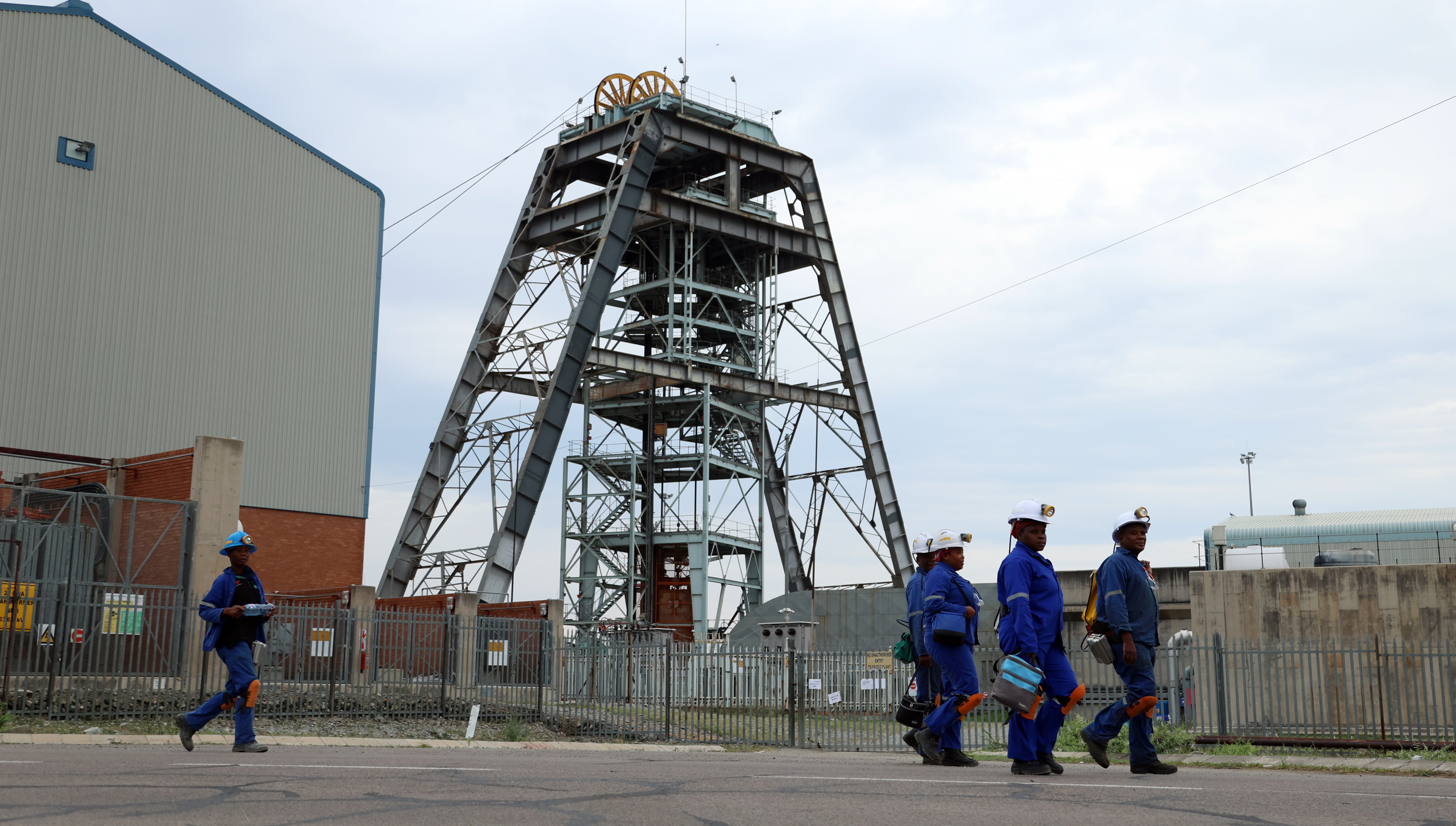
Miners walking outside the 11C shaft at Impala Platinum mine in Rustenburg,11 miners lost their lives and 75 were injured in an accident on 27 November 2023. (Photo: Felix Dlangamandla)
Implats under scrutiny
Many questions will be raised about the Implats disaster at a tough time for platinum group metal (PGM) producers, who have seen prices and profits collapse from the record highs they were reaping two years ago. Implats’ share price pointedly had its own rapid descent on Tuesday, falling by more than 8% to extend its losses in 2023 to almost 65%.
“While we have a strong understanding of what happened yesterday, we are still investigating how it could have happened, and the answer to that question and other concerns may take some time to accurately establish. We are working closely with the relevant authorities and will provide additional updates when possible and appropriate,” Implats said.
That means the accident was preventable, but it is too late for the 11 who died and their families, and the 75 survivors who must have had a harrowing time during the rapid descent and its bone-shattering halt.
This point was not lost on the Association of Mineworkers and Construction Union (Amcu), which last year signed a five-year wage deal with Implats, signalling a new era in the union’s often combative relationship with capital.
“Amcu has been calling for the amendment of the Mine Health and Safety Act for these company bosses to be really accountable, especially to be charged with culpable homicide. Some of these accidents are repeated and is an accident that could have been avoided,” Amcu president Joseph Mathunjwa was quoted as saying by EWN.
Implats will also have to answer questions in the boardroom.
Investors have been among the biggest drivers of the overall mine safety drive in this age of environmental, social and governance concerns, or ESGs, which have risen to the top of corporate agendas. These days they generally don’t like their dividends drenched in blood, and Implats to its credit has also significantly improved its safety record over the years.
Rustenburg accounts for 1.2 million ounces of Implats’ production each year, about a third of its concentrate output. But a temporary closure of the operations does not explain its share price descent on Tuesday. A single fatality will routinely close a mine for at least a couple of days.
Implats has investors, labour and the government breathing down its back. It’s not a great space to be in when PGM prices and margins are on the edge. Expect rocks to fall. DM

















 Become an Insider
Become an Insider
Poor buggers.
Terribly sad working down a mine is not the easiest of jobs.
Pity that the taxi industry is not as focussed on safety as the mining industry. AMCU wants the mine bosses to be held really accountable. Where is a similar demand for safety accountability in the taxi industry, where 11 people, or 8, or 16 die almost on a weekly basis on the South African roads. All credit to Implats – its safety record shows how hard it has been driving safety. AMCU why not focus on the taxi industry where the much bigger danger to your members lies as they travel to and from work each day.
Association of Mineworkers and Construction Union to focus on taxi industry???
Anyway condolences to the affected families 🙁
Key question is why”the conveyance unexpectedly reversed direction” as management put it.
My uncle was an underground surveyor in the mines for 15 years, and always said the lift man — in his day it was always a man — was checked to make sure he had not been drinking before every shift.
And was not allowed to have radios, friends visit, outside telephone, or any other distractions while at the controls.
These days the mechanics will have gone to be replaced by buttons on a screen but the same principles should remain.
Then there is the failure of the emergency brakes, which can only be due to lack of maintenance. Like office lifts, these should spring out as soon as there is any over speed, and while a jolt, it should be a progressive stop.
As for the final snag, it probably stopped a full on crash into the bottom of the shaft.
Horrible experience for the people in the lift.
The failure of the emergency brakes and fall arresting mechanism is what I’d be most concerned about. I have had dealings with a company in Joburg that manufactured that equipment, and to a very high standard, but they left for North America about 10 years ago.
Gave my ideas in my comment 🙂
I’m a bit confused. You implied that the suspension cable remained attached to the conveyance. Did the winder brakes fail? They should be applied automatically in the event of a trip.
Something very strange here .
Spent 10 years underground , deep in the gold mines !
Why did the cage drop with the cable attached ?
Maybe the snagging of the counter balance was noticed by the hoist driver .
Wonder how they got over the failure of the ‘slack rope ‘ indicator , the sheer weight of the rope blows that out the park .
Talking from personal experience here . Our small personal cage came to a stop , slowly .
We just hung there , waiting , no phones in the cage .
One guy was claustrophobic !! Yeah ! He went into survival mode , stripping and dressing .
Lots of conversations .
Then we felt ‘ that jiggle ‘ mentioned above !
Then we knew we had a problem !
The driver had ‘ de clutched ‘ us , against mining law !
Slowly got to the sub level bank . .
The counterweight cage ‘ not passed for travel ‘ got stuck , the slack rope ‘device ‘ failed , rope coiled on the roof , forcing it loose and crashing to the bottom of the shaft !
So the cage has ‘ emergency brakes ‘ anyone know how they work ?
When last tested with a full load ?
Inspectors of mines having their work cut out!
OK 2008 , something similar happend , cage came loose !
1974/5 cage door opened on decent at WDL , workers packed like sardines , 11-15 literally ended up as mincemeat !
1973 Malawians at Kloof GM got scared of going underground , just quit and started walking to Jhb , all 900 of them .
Deep level mining in inherrently dangerous . Been there seen most of it , not fun !
After 200 years , after the Davey Lamp was invented , only in the mid 1970 ‘s did folks realise that the design was wrong , then modified . Will spare you the details !
The loss of 11 lives is tragic.
Regretfully this numbers pales in comparison to the 70 murders a day, 50 road deaths per pay.
Finally, who is keeping count of the death of those engaged in illegal mining?
A balanced view is needed to prevent a lopsided attack on the mining industry that contributes to keeping the wheels of the economy turning
It’s not a conveyance cage, it’s called a skip.
Just a ‘cage ‘ , the ‘skip ‘ is just used for hoisting rock or lowering long material down the shaft .
Rarely in vertical shafts would the skip be used to carry people , somewhat different on incline shafts 🙂
Understandably, there is much to investigate. Besides checking the soundness/application of the prescribed/recommended maintenance requirements, were routine replacement components sourced from trusted suppliers and not obtained on the cheap from unvetted suppliers? Sadly, the latter is a necessary question these days.